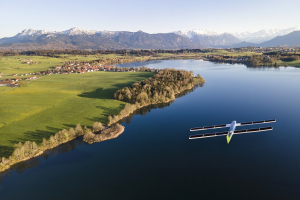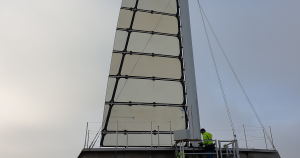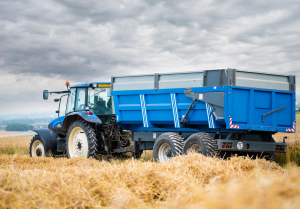Innovative solutions for non-destructive testing
The start-up company XSun developed its autonomous solar drone in collaboration with many specialists, including Capacités’ experts in mechanical engineering.
Numerical analysts from Airbus Helicopters needed an experimental database to build a digital model of helicopter blade behavior. They contacted Capacités to instrument one blade and then conduct measurement campaigns.Capacités’ experts first developed fiber optical instrumentation, with a gauge every five millimeters. It was installed directly on the blade that the manufacturer provided. Tensile and torsion stresses were applied to the blade to reproduce the stresses it would withstand in real conditions in an outdoor environment.
The optical fiber was examined to measure the strain and temperature changes of the blade. A digital image correlation system was then used to conduct a second series of strain measurements.
Capacités’ experts compared the results from both measurement techniques; this allowed them to calibrate the optical fiber to obtain a real state of the structure and populate the anticipated digital model.
Their work was conclusive, and Airbus Helicopters has signed on for a three-year thesis with researchers from the University of Nantes in order to obtain more in-depth results.
To complete this project, the Capacités’ experts benefited from support and technical equipment from the GEM laboratory (Research Institute in Civil and Mechanical Engineering), joint research unit of Nantes Université and the CNRS
These projects may also interest you

The start-up company XSun developed its autonomous solar drone in collaboration with many specialists, including Capacités’ experts in mechanical engineering.

The mechanical engineering experts from Capacités are participating in the second phase of testing for the sail of the future.

Monroc designs and manufactures trailer axles for agricultural and industrial machines. It contacted the mechanical engineering experts at Capacités to help develop an innovative force sensor that measures the longitudinal force caused by towing while simultaneously filtering out vertical and lateral gyration forces. It is designed to be positioned at the hitch of tractors that haul loads weighing several dozen tons.
This site uses cookies and gives you control over what you want to enable